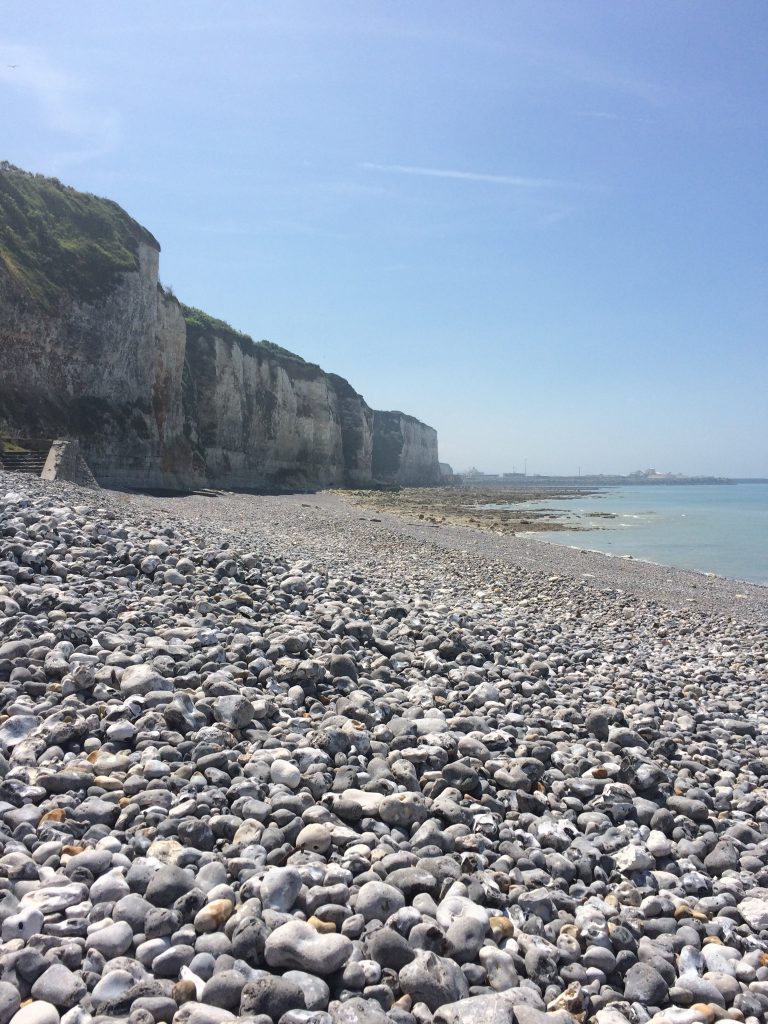Today we toured two of the five beaches stormed in the invasion of Normandy on June 6th, 1944: Omaha and Utah. These two beaches were the two overseen by the Americans and have coincidentally been the two that I’ve studied the least and therefore found today’s talks new as well as interesting. The first piece of trivia that caught my attention was that initially, only four of the five beaches were the targets of Operation Overlord; two beaches overseen by the Americans and two by the Canadians, leaving Utah and the British completely out of the equation. Upon seeing this final draft, General Dwight D Eisenhower asked where the British forces were planning to be in this invasion they were so invested in. From there the front was opened to incorporate a fifth beach and expand the British presence from zero to two whole beaches. I was completely unaware of the fact that there was any doubt that Britain would have been on the forefront of an invasion of Europe in 1944. Though the world had become a great deal more interconnected by the time the Second World War broke out, to give the colonies the opportunity to take over Europe from Germany by invading alone seems as a lot less appealing. Apparently it was a lot less politically problematic to send colonial boys to die rather than their own, consequences of an American postwar Europe be damned.
The Utah Beach invasion was the most successful of all 5 beaches in terms of objectives reached and the number of causalities sustained, especially when compared to the Omaha Beach invasion. Two airborne divisions were dropped behind the causeways the Germans had made as the only way to approach the beachhead. From behind, they had created strongpoints while flooding all surrounding land to deter invaders. 12 000 strong each, both the 82nd and 101st airborne divisions sustained around 1000 casualties in total, secured the causeways, and made the occupation of the beach possible. When presented at the Utah museum, the curator’s notes made it seem as if the world had been changed by the outcomes of Utah Beach and though I agree that it was crucial all beaches be captured, to suggest that the Allies would have ‘failed to save the world by losing Utah’ distorts the memory of this battle to serve a modern American narrative of being the international police state.
Omaha Beach was another story. One of the many issues with this beach was that the Germans defending it were the 352nd, a properly trained division who had fought on the Eastern Front and were merely guarding the Atlantic Wall area while training. The American’s drop point, instead of being only 1 mile off like in Utah, was so far away from the beach that almost all of their tanks sank. The one that made it ashore was blown up. The Americans also had no artillery because the guns they were using were not the self-propelled howitzers the Canadians were using at Juno but guns that had to be towed. They were either left in the craft or swamped when brought on the beach. At the end of D-Day on Omaha beach a total of 2000 soldiers died; the 116th company sustained 100% casualties. It was the worst hit beach. Despite all the shortcomings of the invasions and situations surrounding them, Allied forces managed to capture all beaches and invade Europe.
Brigette Farrell

